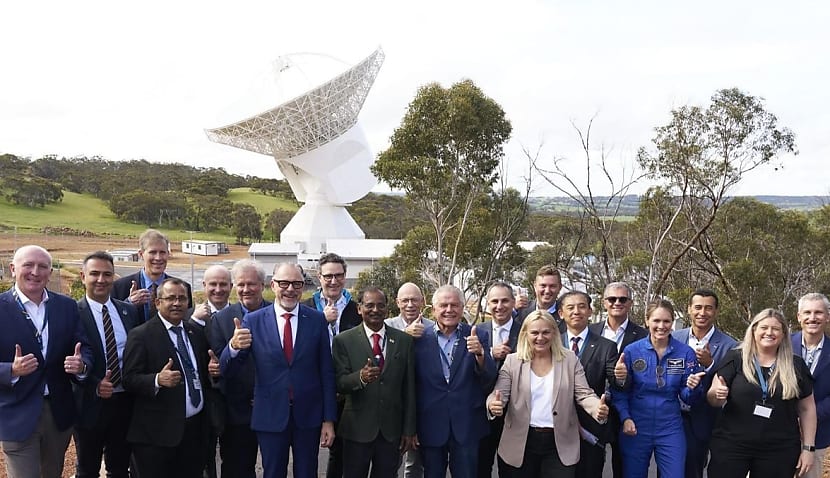Officially opened today by European Space Agency (ESA) director-general Josef Aschbacher and Australian Space Agency head Enrico Palermo, the New Norcia 3 antenna represents ESA’s most advanced deep-space communication technology to date.
Jointly funded by ESA and the Australian Space Agency, New Norcia 3 forms part of ESA’s Estrack ground station network, enhancing Europe’s capacity to communicate with scientific, exploration and space safety missions across the solar system.
Located about 140 kilometres north of Perth, the facility’s position provides critical round-the-clock coverage for deep space missions.
Palermo said the project reflects Australia’s reputation as a trusted and capable partner in space operations.
“Australia is well known as a trusted, experienced and capable operator in deep-space communications,” he said. “This investment by ESA and the Australian government will unlock millions of dollars in local economic value and employment opportunities over its projected 50-year lifespan.”
The announcement follows the Australian government’s decision at this week’s 76th International Astronautical Congress to begin negotiations on a new cooperation agreement with ESA. The agreement would formalise collaboration between the two partners, giving Australian businesses and researchers greater access to ESA’s space science programs and missions while supporting further European activity in Australia.
“It’s another chapter in the story of Australian and European partnership in space,” Palermo said. “We’ll build on this foundation as we negotiate a new cooperation agreement with ESA.”
When it enters service in 2026, New Norcia 3 will support ESA’s current flagship missions, including Juice, Solar Orbiter, BepiColombo, Mars Express and Hera, and play a vital role in upcoming missions such as Plato, EnVision, Ariel, Ramses and Vigil.
Aschbacher said the new facility was a strategic investment that would enhance ESA’s ability to capture and return valuable scientific data from across the solar system.
“This investment reinforces ESA’s deep-space communication capabilities and maximises the return of our missions’ most valuable asset: the data transmitted from spacecraft travelling far from Earth,” he said.
The antenna features cryogenically cooled components capable of operating at temperatures as low as minus 263 degrees, near absolute zero. This extreme sensitivity enables it to detect faint signals from spacecraft millions of kilometres away, greatly improving data quality and transmission rates.
Beyond its European missions, the facility will also support ESA’s growing international cooperation, providing cross-support for agencies in the United States, Japan and India, as well as commercial space operators.

